In the Thick of It | Chowder Recipes
Take a deep dive into New England’s classic warm-up, chowder, in all its tasty forms.
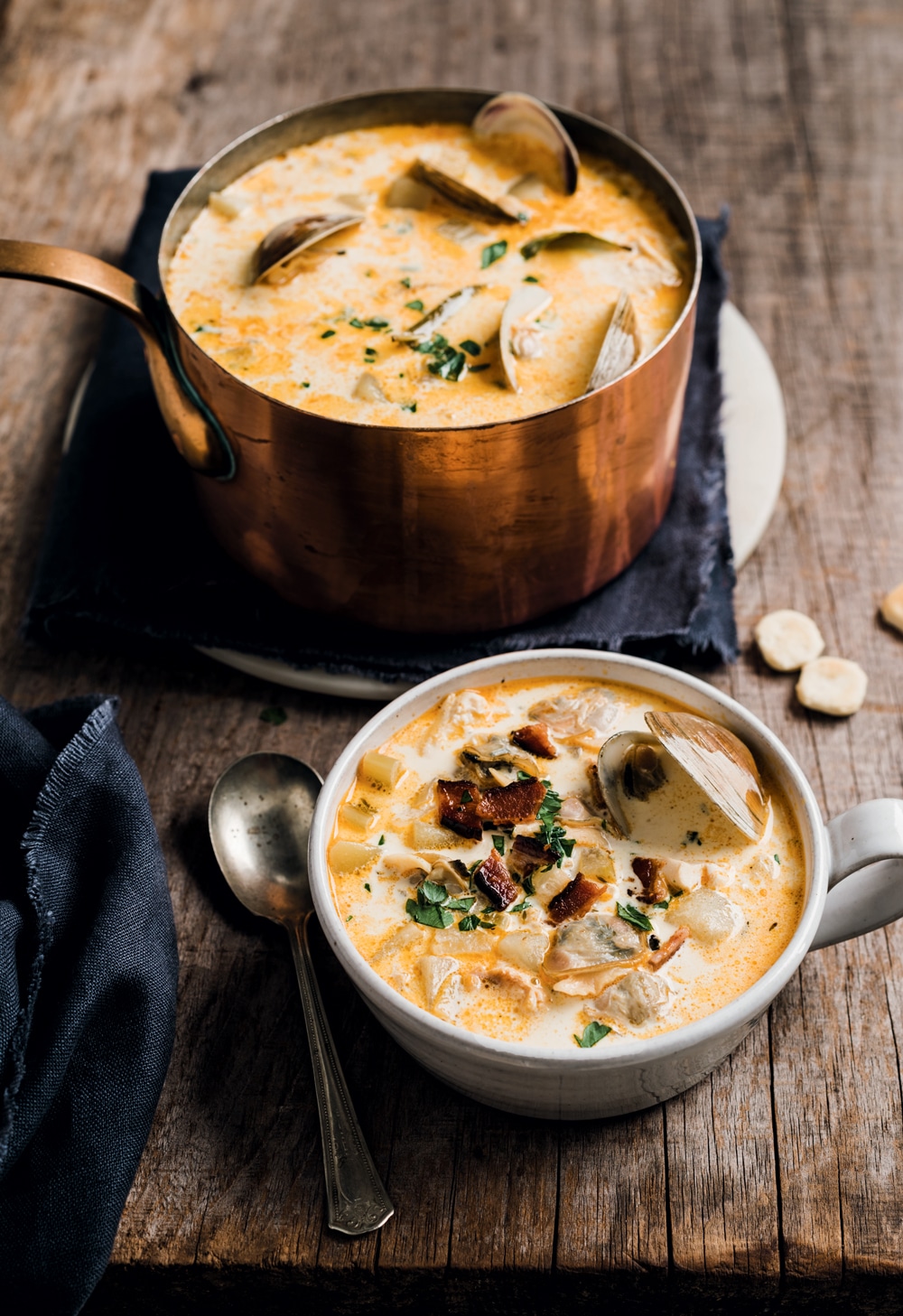
Coffee By Design | Portland, Maine
Photo Credit : Katherine KeenanBy Nadine Nelson
Chowder is a culinary contradiction. On the one hand, it’s utilitarian, the perfect repository for humble ingredients like salt pork, onions, and potatoes, plus whatever protein is on hand. On the other, it can be luxuriously rich, serving with honor as one of the iconic ambassadorial dishes of New England.

Photo Credit : Michael Piazza | Styling by Liz Neily | Silo Soup Mug by Farmhouse Pottery
It also tells the story of our region’s foodways. Consider the chowder recipe penned by Sarah Josepha Hale, the influential 19th-century magazine editor, author of “Mary Had a Little Lamb,” and New England culinary mythmaker (her campaign to make Thanksgiving a national holiday resulted in the menu many of us still eat today). Her views on domestic life influenced countless women of her era. And although hers is not the first recorded recipe for chowder, it’s a classic early example:
To Make Chowder: Lay some slices cut from the fat part of pork, in a deep stewpan, mix sliced onions with a variety of sweet herbs, and lay them on the pork; bone and cut a fresh cod into thin slices, and place them on the pork, then put a layer of pork, on that a layer of biscuit, then alternately the other materials until the pan is nearly full, then season with pepper and salt, put in about a quart of water, cover the stewpan very close, and let it stand, with a fire above as well as below, for four hours; then skim it well, and it is done. This is an excellent dish and healthy, if not eaten too hot.
Note the absence of clams or milk. Those came later, as the New England dairy industry expanded and shellfish gained respectability. But whatever its ingredients, chowder has always been a community dish, freely interpreted.
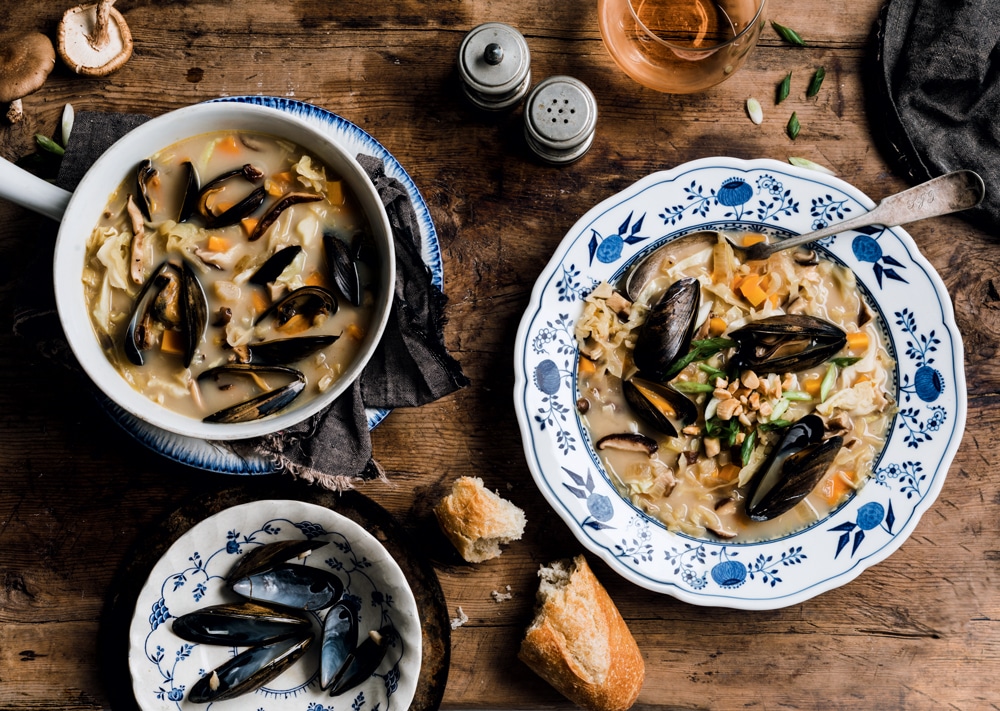
Photo Credit : Michael Piazza | Styling by Liz Neily
Most historians agree that the word chowder derives from the French chaudière, or cauldron, the pot of choice for this peasant soup. French and British villages along the English Channel were known to have big cooking vessels ready and waiting for fishermen to add a portion of their catch. As these fishermen migrated across the Atlantic to Newfoundland and down to Maine, they brought their particular method of soup making to the New World. There, they discovered that indigenous peoples had long relished quahogs and other seafood layered in long-simmered pottages with meat, corn, beans, and other vegetables, depending on the season. These were not chowders, but there was some resonance in the communal cauldron.
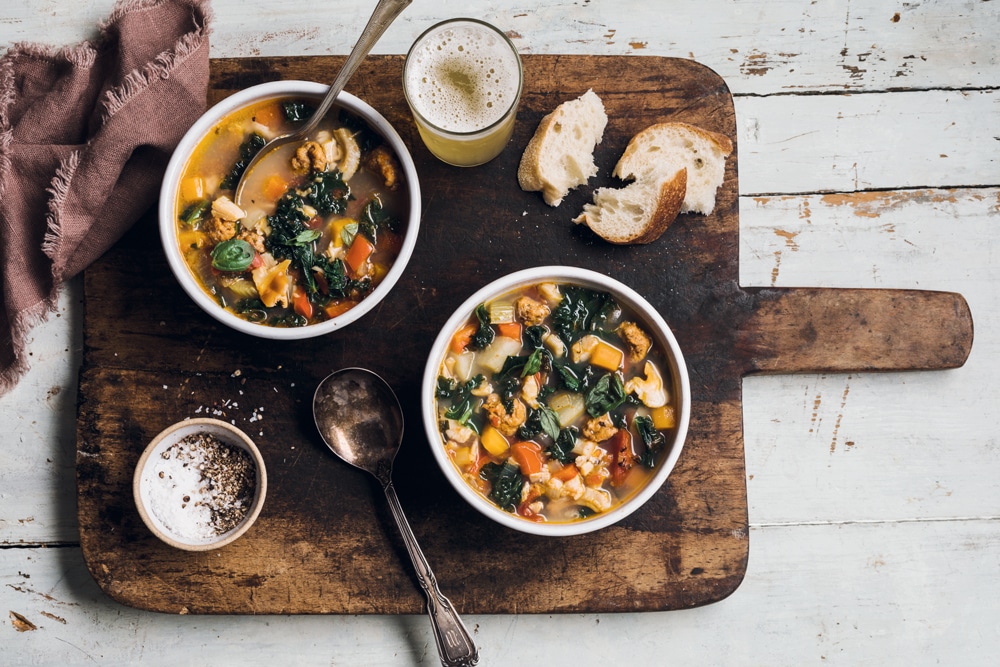
Photo Credit : Michael Piazza | Styling by Liz Neily
Chowder’s popularity reached critical mass in the 19th century, when summer picnics and clambakes up and down the New England coast became synonymous with making and serving chowder on the beach. As Marjorie Druker, chef and owner of the New England Soup Factory, puts it, “Chowder is New England soul food.”
But what, exactly, is chowder today? Yes, potatoes and onions are common. The classic, creamy clam or seafood version is iconic. And tomatoes are generally frowned upon outside of Manhattan—so much so that in 1939, a Maine state representative named Cleveland Sleeper drafted a bill making it a crime to add them to chowder, with offenders’ punishment being to dig clams during high tide. (The bill was never actually introduced in the legislature.)
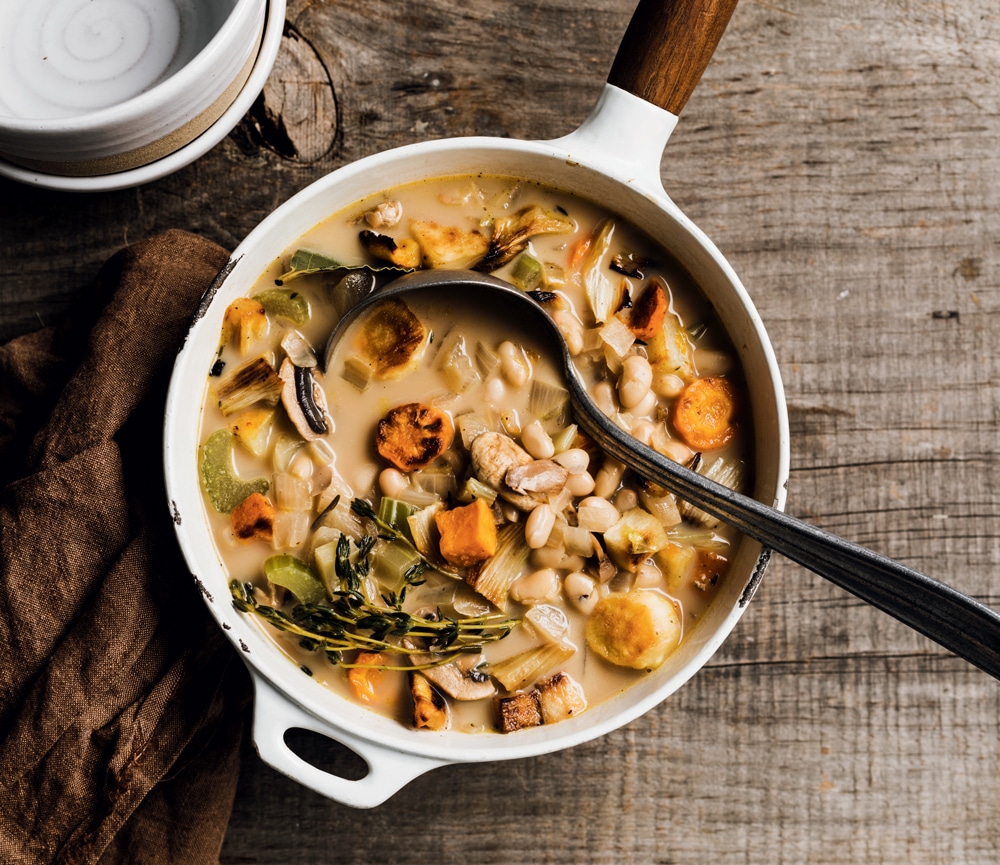
Photo Credit : Michael Piazza | Styling by Liz Neily
It’s generally understood that chowders are thicker than soups but less hearty than stews. And different parts of the country have their own distinct styles, with the most recognized being New England, Rhode Island, Manhattan, Long Island, New Jersey, Delaware, Hatteras, and St. Augustine. Looking beyond the United States, you’ll find hearty soups from Portugal, Peru, and Japan that could qualify as chowders, too. Maybe chowder is simply a universal catchall for hearty bowls of comfort.
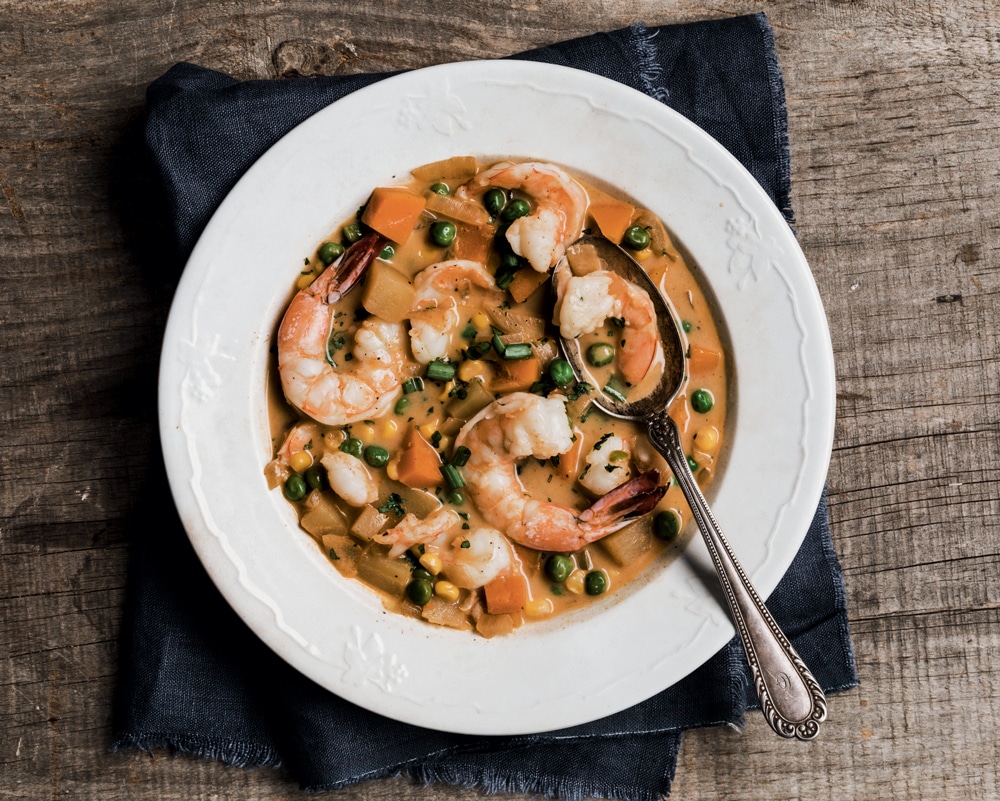
Photo Credit : Michael Piazza | Styling by Liz Neily
The following recipes make great use of seafood, sausage, winter vegetables, and pantry staples. They represent a wide variety of styles and can accommodate most diets (including vegan, gluten-free, and dairy-free), seasonal provisions, and personal preferences. In short, they offer all the tools you’ll need to make chowder your own.
New England Clam and Seafood Chowder
Mussel and Miso Chowder
Roasted Winter Vegetable and White Bean Chowder
Portuguese Clam and Kale Soup
Peruvian-Style Shrimp Chowder







